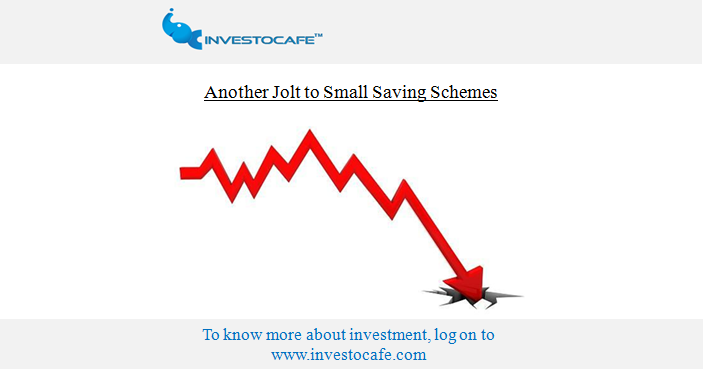
Another Jolt to Small Saving Schemes
05 Dec 2018Interest rates for small savings schemes are notified on quarterly basis since the inception of RBI Monetary Policy Committee last year. As per the rules the rates of interest on Small Saving Schemes are decided on the basis of prevalent yield or interest rate of Govt Bonds. Hence the conservative way of getting a fixed return on savings is no more in practice. Accordingly, the Finance Ministry today notified the rates of interest on various schemes for April- June period of 2021-22.
The popular National Savings Certificate (NSC) and Public Provident Fund (PPF) will see their interest rates come down to 6.8% from 7.1%.
The Kisan Vikas Patra will now pay out 6.9% instead of 7.6% and mature in 113 months.
Interest rate on Monthly Income Account Scheme will come down to 7.6% from 7.7%.
The rate of interest for the first quarter for 5-Year Senior Citizens Savings Scheme has been reduced to 7.40 percent from 8.5 percent
The Sukanya Samraddhi Account Scheme, for girl child, will now fetch 7.6 percent interest rate. It was 9.2% when it was launched six years back.
The new rates will come into effect from 01 April 2023.
The Problem
These govt scheme names itself suggest that these are just savings schemes and not investment schemes & there is a huge difference between saving and investment. Let’s have a look at the difference;
Savings - Portion of current income not spent on consumption. Money is not parked with a view of growth or beating inflation. e.g. Money parked in Savings a/c, Current a/c, Cash kept at home etc
Investments - It means putting your saved money in various financial products in order to earn returns and grow your wealth with an aim to beat inflation. e.g. Mutual Funds, Equity, Real Estate, Gold etc.
So what is better saving or investments. Hopefully one would always prefer Investments over Savings. The govt savings schemes would just save your money from expenditure but not from the risk of inflation, since the average inflation as per CPI of last 10 years is around 8 %, which implies that your money in govt savings scheme would have grown in number but it wouldn’t increase your purchasing power.
What is the Solution?
The Solution lies in beating the inflation and goal based investments and not in just savings. A smart investor should decide a financial goal and then start investments in a asset class or financial product like mutual funds, which can provide inflation beating returns. Hence your aim should be to get around 3 to 4 % higher returns than the average inflation of 8 % i.e. around 12%.
The history of mutual fund industry of last 20 years has given an average returns of 14 to 16 percent. With this history the aim of 12 percent can easily be achieved in long run. Therefore, change your idea of saving to investment and start investing in mutual funds with financial goal and long time horizon. You would amass great wealth in the long run.
Visit www.investocafe.com to know about mutual fund investment options and stay on path of financial freedom
Happy Investing !!!
Written by: Anvesh Pandey, SEBI Registered Investment Advisor
To get in touch, write on anvesh.pandey@investocafe.com or reach through www.investocafe.com.
To get in touch please visit us at investocafe.com

